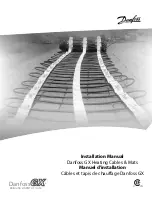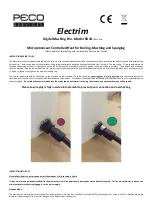
160/200/160P/200P AC/DC Series Machine
www.longevity-inc.com
6011, E 6013, E 7014, or E 7018 may be used, each having its own distinct features and purpose. These are
among the most common electrodes used in the industry and are not difficult to find. E 6011 electrodes are not as
smooth running as some of the other electrodes, but offer the advantage of being able to weld on rusty metal and
contaminated surfaces. It is widely used and requires very little skill to begin using. This is not a particular
endorsement of an E6011, rather a simple example of what may be used in developing proficient technique. It is
recommended that a variety of electrodes be used and practiced with. Consultation with an experienced local
welding supplier will help greatly in determining what welding electrode is the best for your given situation.
Many times, samples or small packages of electrodes are available at relatively low cost to determine for yourself
the best electrode to use.
Stick Electrode Chart Example: E 60 1 3
Strength
60--60,000 psi,
70--70,000 psi
Weld Position
1--All positions: Flat, Vertical, Horizontal, & Overhead
2--Flat Position or Horizontal Fillets Only
3--Flat Position Only
Weld Characteristics
0--Non-low hydrogen, DC Reverse polarity
1--Non-low hydrogen, AC or DC Reverse polarity
2--Non-low hydrogen, AC or DC Straight polarity
3--Non-low hydrogen, AC or DC Either polarity
4--Non-low hydrogen, iron powder coating, AC or DC Reverse polarity
5--Low-hydrogen, DC Reverse polarity
6--Low-hydrogen, AC or DC Reverse polarity
7--Non-low hydrogen, iron powder coating, AC or DC Reverse polarity
8--Low hydrogen, iron powder coating, AC or DC Reverse polarity
Polarity Definition
electrode negative =straight polarity (typical stock machine setup)
electrode positive = reverse polarity
Be sure to observe the electrode manufacturer recommendations regarding polarity. If the weld appears lumpy,
porous or otherwise malformed, change the polarity of the ground cable and the electrode holder cable. Many
electrodes run with in reverse polarity, (DCEP) setting. A few run with a straight polarity (DCEN). Some will run
either way. For reverse polarity (DCEP) stick welding, swap the electrode holder and ground cable connections.
Proper weld identification. Overlap and undercutting are two main causes of weld failure. Proper washing of the
weld bead into the sides or “toes” of the weld is important. Keep the welding electrode or the TIG tungsten and
welding arc within the weld joint to prevent overlap. Pausing on the sides of the welds to wait for the sides to fill
reduces the chance of undercutting, even if the current is a little too high. If it is possible, with any practice weld,
cut the joint down the middle, lengthwise, or place the weld in a vice and use a hammer to bend the metal over the
weld area until it is either broken or bent 90 degrees. This destructive testing method will help you improve your
skill by revealing faults and flaws in your welds.







































